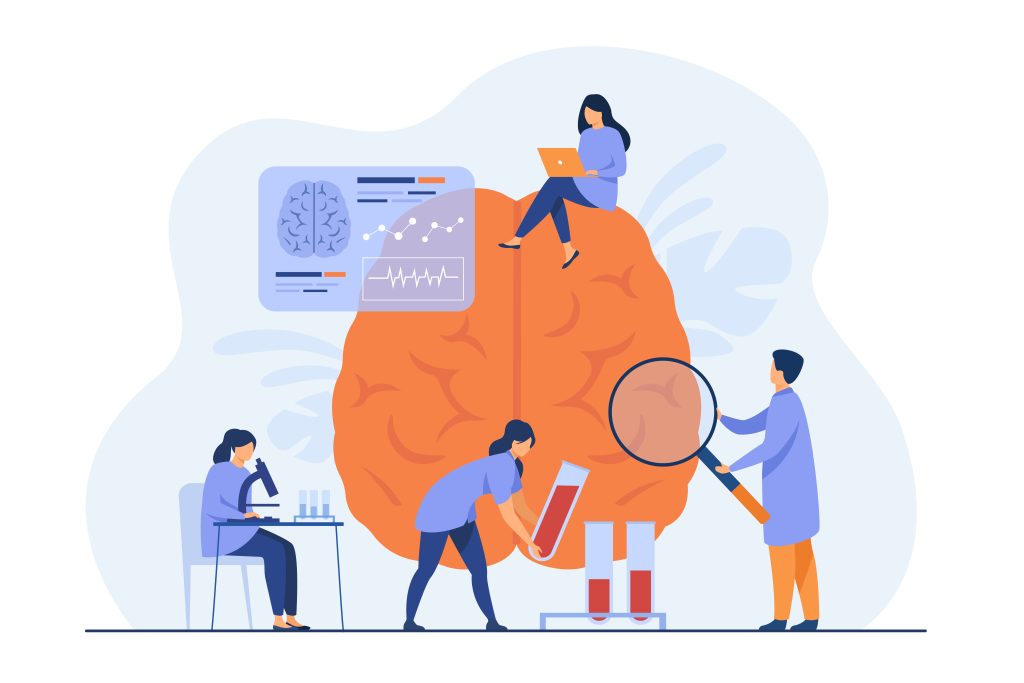The Benefits of Implementing CRM in Higher Education Institutions

CRM, short for Customer Relationship Management, has been making waves in various industries, and higher education is no exception. Gone are the days when CRMs were just about managing sales. Now, they’re about student engagement, streamlining operations, and optimizing data management. For colleges and universities, a good CRM system means more than just handling inquiries; it’s about enhancing the student journey from admission to graduation. By using educational technology tools like Salesforce, Zoho, and Creatio, institutions can embrace a more connected and efficient way of managing interactions and information.
Understanding CRM and Its Importance

Definition of CRM in the Context of Higher Education
Customer Relationship Management, or CRM, might sound like it’s only relevant to businesses, but hold onto your hats—it’s pretty vital in higher education too. In this context, CRM isn’t just about managing “customers.” It’s about managing relationships with prospective students, current students, alumni, and even faculty. It’s the digital tool that schools didn’t know they desperately needed to stay hip and happening.
Imagine CRM as an all-knowing friend who remembers everything. From a student’s initial inquiry to enrollment, academic journey, and out the other side into alumni world, a CRM system tracks it all. It stores details like application details, communications, events attended, and engagement throughout the student’s lifecycle with the institution. In simple terms, it’s like having a super organized notebook that doesn’t run out of pages, keeping every bit of student information tidy and accessible.
The Role of CRM in Improving Student Engagement
CRM systems are game-changers when it comes to engaging students. Engagement isn’t just about lectures and the occasional group project. It’s about communicating in ways that make students feel noticed, supported, and part of their educational community. With a CRM, you can send personalized emails, remind students of upcoming deadlines, and even nudge them about events they might be interested in. It’s a little like having a personal assistant who cares about you finishing that degree.
But wait, there’s more. CRM software like Salesforce or Zoho can help institutions tailor their approaches based on student interests. Did a student show interest in environmental science clubs? Bam! They get more info on related events or courses. It makes students feel like someone on campus has their back and is paying attention—even in a sea of thousands.
Key Benefits of CRM for Educational Institutions
Enhancing Student Data Management
Let’s talk data. We’re living in a data-driven world, folks, and educational institutions are certainly not insulated from this trend. Picture the things schools have to track: grades, attendance, tuition, extracurriculars, the works. CRM systems, such as Pipedrive and Capsule, provide a centralized platform to manage all this data effectively.
For instance, it significantly cuts down on the old-school way of maintaining files and spreadsheets flying everywhere like confetti. With CRM in place, every piece of data is safe, organized, and, most importantly, actionable. Need to find out which students have outstanding fees? Or which students are on the verge of dropping classes? Your CRM has the answers. It’s basically the difference between having a messy room and a room where everything is categorized by label.
Another neat trick is how a CRM aligns with data privacy norms. Educational institutions have to tread carefully around student privacy regulations. A robust CRM ensures compliance by securely storing and managing sensitive student information. It’s safe to say that with CRM, institutions are less likely to fumble with data—and more likely to score their data goals.
Streamlining Administrative Processes
Now, let’s talk about the backbone of any educational establishment: administrative processes. Let’s face it, paperwork and tracking every little detail across departments isn’t thrilling. It can be like baking a cake with no recipe. This is where CRM tools shine by streamlining tedious tasks.
Imagine admins finally finding rhythm and efficiency. From admission processes to student queries, and even alumni tracking, CRM solutions offer an entire suite of features that can automate repetitive tasks. Think automated emails for student inquiries, reminders for campus tours, and follow-up for applications—without a human having to lift a finger. Leave the heavy lifting to the likes of Creatio, and watch as workloads dwindle under its light-footed magic.
But there’s a cherry on top. CRMs enhance cross-departmental collaborations. When everyone has access to the same data, the left hand knows what the right is doing. Gone are the days of playing phone tag between offices. Instead, CRM brings everyone to the same page, resulting in fewer headaches and workflows smoother than a jazz saxophone solo.
Boosting Student Retention Rates
Student retention is the bread and butter for higher ed institutions. You can recruit all the students you want, but if they aren’t sticking around, that’s a problem. Here’s where CRM can play a superhero-esque role.
A robust CRM helps identify struggling students before they fall through the cracks. By monitoring engagement metrics, academic performance, and even social involvement, CRM’s analytical tools allow you to spot potential dropouts miles away. Once identified, schools can step in with support, whether it’s counseling, tutoring, or just checking in to see how a student is doing. It’s like giving institutions x-ray vision into student wellbeing.
Moreover, CRM tools enable personalized communication with students. Whether through nudges of encouragement or alerts about resources available to them, schools can offer specific support that resonates with individual student needs. This personal touch can make all the difference in someone’s academic journey.
Let’s not forget the power of showcasing student success stories too. CRMs help easily share narratives of students who have overcome hurdles and achieved success. This builds a strong community feeling, enhancing the personal connection to the institution itself, and spurring students to stay till the last chapter of their academic story.
In conclusion, CRM in higher education is not just a fancy gadget in an administrator’s toolkit—it’s an essential part of enhancing the quality of relational dynamics, data management, and improving the overall educational journey. As educational institutions face the future, those with a strong CRM foundation are likely to navigate challenges more adeptly and come out stronger on the other side.
Popular CRM Platforms for Higher Education

In the ever-evolving landscape of higher education, Customer Relationship Management (CRM) systems have emerged as vital tools. They enhance student engagement, streamline data management, and ultimately improve the quality of education. Let’s dive into some popular CRM platforms shaking things up in academia.
Overview of Salesforce in Academia
When it comes to CRM platforms, Salesforce feels like the granddaddy of them all. It’s like the Mount Everest of CRMs, towering over others thanks to its comprehensive features and robust interface. Salesforce offers a version specifically tailored for higher education institutions, called the Education Cloud.
– Student 360-Degree View: One of the highlights of using Salesforce in academia is its ability to provide an all-encompassing view of the student. From interactions, grades, course enrollments, and extracurricular activities, educators can gain insights at a glance.
– Engagement Tools: Salesforce excels in providing a host of engagement tools that let institutions personalize their approach to student interaction. Think automated emails, alerts, and chatbots to keep the communication flowing smoothly.
– Data Management: The strength of Salesforce lies in its ability to handle large data sets. This feature is indispensable in an educational setting that collects tons of data daily—from applications to alumni networks.
The flexibility and scalability of Salesforce make it a top choice for larger educational institutions gunning for comprehensive solutions.
Key Features of Zoho for Educational Use
Zoho CRM is a bit like that favorite underdog movie. It doesn’t have the same name recognition as Salesforce, but those who use it, swear by it. Why? Because it offers a cost-effective solution with the dynamism needed for educational purposes.
– Customization: One thing educators rave about is Zoho’s customizability. You can tweak forms, fields, and workflows to fit exactly what your institution needs.
– Integration: Zoho integrates seamlessly with popular tools like G Suite and Microsoft Office, making the transition into the CRM ecosystem less jarring.
– Automation Capabilities: With Zoho, you can automate routine tasks. Think of it as a way to turn your administrative drudge work into a well-oiled machine.
– Scalability: Zoho is incredibly scalable, so whether you are managing a community college or a large state university, Zoho can grow with you.
In a nutshell, Zoho’s combination of flexibility and automation makes it highly efficient for educational settings aiming to boost productivity without stretching budgets.
How Pipedrive Supports Student Engagement
Pipedrive might not be the first name you think of for higher education, but hear me out. It’s like a secret weapon in the CRM arsenal. Though originally targeting sales teams, Pipedrive has tools that work wonders for student engagement.
– Pipeline Management: The idea of pipelines can be wonderfully re-imagined for student journey mapping—tracking a student’s progress from prospect to graduate with possible diversions like internships and placements.
– Visualize Processes: One of Pipedrive’s standout features is its visual approach. It lets you see the entire student journey in a clear, organized way, making follow-ups easier and more intuitive.
– Communication: Keeping track of emails, calls, and meetings without dropping the ball becomes a reality with Pipedrive’s communication tracking features.
Sure, Pipedrive might require some creative thinking to adapt to educational settings. But once you do, the potential to enhance student engagement is massive.
Implementation Challenges and Solutions
Okay, let’s talk challenges. Implementing a CRM system in a higher education context can feel like trying to juggle while riding a unicycle. But fear not! Let’s look at common obstacles and some supercharged strategies to overcome them.
Common Obstacles in CRM Adoption
Rolling out a CRM isn’t all sunshine and rainbows. The common issues that pop up look something like this:
– Resistance to Change: It’s human nature to resist the unknown. Faculty and administrators might fear the learning curve and cling to good ol’ spreadsheets or outdated systems.
– Data Security Concerns: In an age where data breaches are front-page news, the rise in concerns about data privacy and security is totally understandable.
– Resource Constraints: Many educational institutions operate under tight budgets, and CRMs can seem like an extraneous expense, especially for smaller colleges.
– Integration Issues: How smoothly a new CRM meshes with existing systems can also be a bit of a nail-biter.
Strategies for Effective CRM Integration
Once we acknowledge the hurdles, we can strategize solutions. Here’s how you can make CRM integration a smoother ride:
– Stakeholder Engagement: Begin with bringing everyone on board. Discuss the benefits, and more importantly, listen to their concerns. Buying into the vision is key for making a CRM project successful.
– Pilot Programs: Before launching campus-wide, try a pilot program with one department. Fine-tune the rough edges, collect feedback, and build confidence before a full roll-out.
– Data Privacy Protocols: Ensure that your CRM provider offers stringent data protection measures. Transparency about how data will be stored and used can build trust among users.
– Flexibility and Customization: Choose a CRM platform that can integrate well with the systems you’ve already got in place. Many systems offer APIs and customizable features to facilitate this.
Training and Support for CRM Users
You can’t just throw a CRM into the educational soup and expect magic. Effective training and ongoing support are vital ingredients:
– Comprehensive Training Sessions: Organize regular workshops and tutorials to get everyone up to speed. Invest time in showing users how the CRM will make their lives easier.
– Onboarding New Staff: Create a structured onboarding process for new staff members. Having a CRM champion within each department can help new folks find their footing faster.
– Continuous Support: Set up a help desk or CRM support team to address ongoing issues. This keeps frustration levels low and the software adoption rate high.
– Feedback Loops: Establish channels for feedback and take the input seriously. The more you adapt to users’ needs, the better the CRM will serve its purpose.
At the end of the day, a CRM is just a tool. But with the right strategy and execution, it can become an indispensable ally in the pursuit of educational excellence. Through careful selection, thoughtful implementation, and diligent use, higher education institutions can transform how they engage with students and manage data, ultimately driving better outcomes for everyone involved.
Future Trends in Educational CRM

The role of CRM in higher education is transforming the way institutions engage with students and manage data. As we look to the future, several trends are poised to revolutionize this space, offering new opportunities for enhancing student experiences and institutional efficiency.
Innovations in CRM Technology
In recent years, CRM technology has seen numerous innovations that have pushed the envelope of what’s possible in higher education. Here are a few trends making waves:
– Personalization at Scale: CRM systems are becoming more adept at delivering personalized student experiences. This means more tailored communications and services based on individual student data, preferences, and behavior. It’s like having a personal academic advisor in your pocket.
– Mobile-First Solutions: As mobile usage continues to soar, CRM platforms are prioritizing mobile-first designs. These solutions ensure students have seamless access to services and information wherever they go, breaking the barriers of traditional desktop-based systems.
– Seamless Integrations: Educational institutions use a multitude of platforms and applications. The latest CRM systems are being designed to easily integrate with these various tools, providing a cohesive ecosystem where data flows freely and efficiently.
These innovations not only enhance student experiences but also streamline university operations, ultimately leading to more responsive and adaptable educational environments.
The Growing Importance of Data-Driven Decisions
In today’s fast-paced educational landscape, data-driven decision-making isn’t just a buzzword—it’s a necessity. CRM systems are at the forefront of facilitating these data-powered insights. Here’s how they’re changing the game:
– Enhanced Student Insights: By effectively managing and analyzing student data, CRMs give educators a clearer view of their student body. This means more informed decisions regarding enrollment strategies, academic offerings, and student support services.
– Predictive Analytics: Predictive models can identify patterns and trends that help institutions anticipate student needs or challenges. This can be incredibly beneficial for addressing potential dropout rates, boosting engagement, and ensuring timely interventions.
– Better Resource Allocation: With accurate data at their fingertips, administrators can allocate resources more efficiently. This means funding and efforts are directed where they’re needed most, optimizing operational effectiveness.
As education becomes more competitive, data-driven decision-making will remain a cornerstone of strategic planning and institutional success.
The Integration of AI in CRM Systems
Artificial intelligence (AI) is no longer a feature of science fiction; it’s a tangible asset in modern CRM systems. AI’s introduction in educational CRMs is having a profound impact, driving several transformative changes:
– Automated Communication: Chatbots and AI-driven communication tools handle routine student inquiries, freeing up staff time for more complex issues. This not only improves response times but also ensures students get the information they need quickly and efficiently.
– Intelligent Recommendations: AI algorithms can suggest courses, activities, or clubs that align with a student’s interests and academic goals. This kind of personalized guidance can help boost student satisfaction and success.
– Enhanced Data Analysis: AI takes data analysis to the next level by recognizing complex patterns in large datasets. This can lead to groundbreaking insights that inform policy and curriculum adjustments.
– Improved Enrollment Processes: By leveraging AI, CRMs can streamline enrollment processes, ensuring students have a seamless experience from application to admission.
As AI technology continues to evolve, its integration into CRM systems will undoubtedly become deeper and more impactful, further enhancing the capabilities of higher education institutions.
The future of educational CRM is bright, with technology promising to enhance every aspect of the student experience. As institutions continue to embrace these trends, the potential for improved student engagement and operational efficiency is limitless. By leveraging the latest CRM innovations, higher education can remain at the cutting edge of educational technology and data management.
Conclusion: Transforming Education with CRM
Integrating CRM systems in higher education is more than just a tech upgrade; it’s a game-changer. Institutions can leverage tools like Salesforce, Zoho, Pipedrive, Capsule, and Creatio to foster a more engaging and personalized student experience. By effectively managing data and communication, schools empower themselves to better understand student needs and enhance their educational journeys.
With these CRMs, higher education can transform engagement, streamline operations, and ultimately become more adaptive to the ever-evolving educational landscape.



